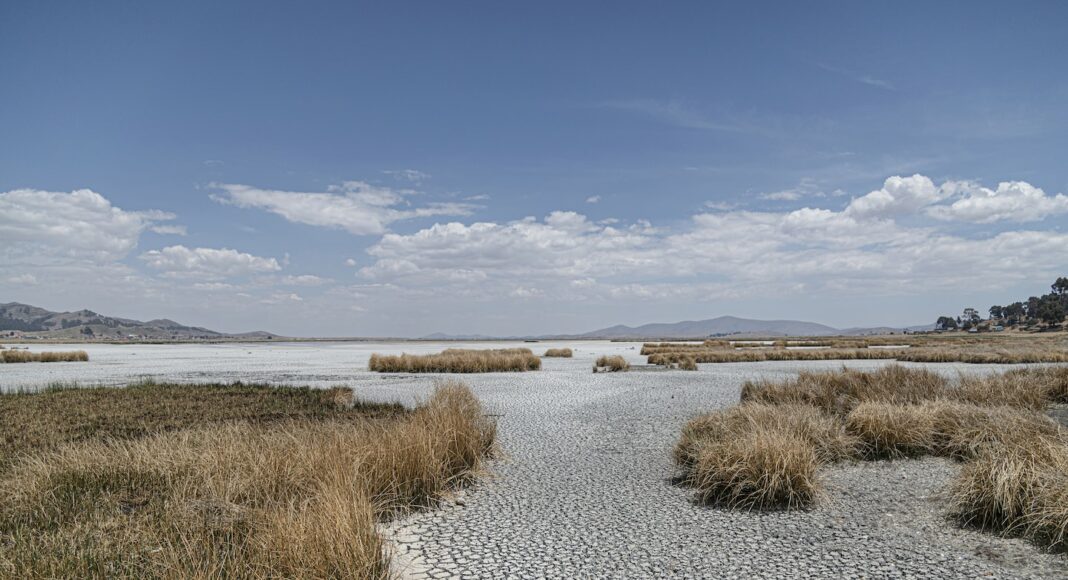BOGOTÁ, Colombia — An El Niño weather system forecast to be among the strongest in recent history has been contributing to an array of disasters, from fires to floods, around the world.
The disruptive weather pattern, occurring over many months every few years, involves an unusual warming of water in the Pacific Ocean and often brings a whiplash of moisture to normally dry areas, and drought to wet, temperate areas. Climate change has exacerbated those extremes, experts say.
“We have made it worse” with climate change, said Mark Cane, a professor of earth and environmental sciences at Columbia University.
South America has been hit especially hard by what Crane calls the “one-two punch of El Niño plus global warming.”
Here are five of the ways El Niño has been impacting the continent.
Fires in Colombia threaten unique plant
High in Colombia’s Andes mountains is a plant called the frailejón. Growing to about the height of an adult human, it’s known for its crown of fuzzy leaves that siphon moisture from fog. The plant turns the haze into water that replenishes local watersheds.
But frailejónes are in peril as a result of an unprecedented fire season across parts of Colombia’s Andes that are usually temperate, cool and moist. The plants grow only at certain altitudes and take decades to mature, raising fears that the wildfires could decimate its various species, which have withstood years of other turmoil in the country.
Frailejónes are so beloved in Colombia that a common children’s song features them. An Instagram account with more than 100,000 followers is dedicated to the plant; a recent post showed a distressed cartoon frailejón surrounded by fire, with the caption: “Forest fires are no joke. The lives of many plants, animals and frailejónes are in danger.”
Dengue rages amid heat waves in Peru
El Niño got its name in Peru, where, the story goes, fishermen noticed the weather pattern around Christmastime. They named the phenomenon “el niño de la naad.”
This latest El Niño has been blamed for fueling a massive surge of dengue cases among people in Peru.
Heavy rains linked to the weather pattern were a boon to the country’s mosquito population last year, producing Peru’s biggest dengue outbreak on record. More than 270,000 cases were reported, overwhelming hospitals in some regions. There were at least 381 dengue-related deaths.
And now, hotter than normal temperatures are again creating “favorable environments for dengue transmission,” the U.N. Office for the Coordination of Humanitarian Affairs said in a regional update on Friday.
Dengue cases in Peru in 2024 are up more than 53 percent from last year, OCHA said, citing figures from Peru’s Health Ministry. The surge, it said, “coincides with prolonged El Niño-induced heat waves.”
Amazon river dolphins die en masse
The bodies of more than 150 pink river dolphins were found in unusually warm waters in Lake Tefé in the Brazilian Amazon in the fall, when some of the more pronounced effects of El Niño emerged.
Scientists said that the cause was not immediately clear but that extreme heat and drought brought on by El Niño and climate change were likely to blame. Water levels had fallen significantly, and the temperature in the lake had reached 102 degrees Fahrenheit.
The warm water disorients the dolphins, Claudia Sacramento, head of the Environmental Emergencies Division at the governmental Chico Mendes Institute for Biodiversity Conservation, told The Washington Post at the time. And then a loss of oxygen essentially suffocates them, Sacramento said.
A study by the World Weather Attribution initiative assessed that climate change was mostly to blame for the “exceptional drought” in the Amazon River Basin. The study, released last month, found that El Niño and climate change were equally responsible for the loss in precipitation, but that a “strong drying trend was almost entirely due to increased global temperatures.”
150 dolphins dead in Amazon; scientists blame 102-degree water
Fires in Chile devastate communities
A rash of wildfires killed at least 131 people this month, according to Chilean authorities. President Gabriel Boric declared a state of emergency, and the country entered a period of mourning.
Authorities are investigating suspicions that at least some of the fires were set intentionally. But experts say warm, dry conditions brought on by El Niño and climate change created ripe conditions for the fires to spread so easily.
This was “believed to be Chile’s deadliest forest fire on record,” the U.N. Office for Disaster Risk Reduction said, “with expectations that the death toll will grow.” Hundreds of people are still missing.
Chile’s deadly wildfires wiped out neighborhoods. One stood unscathed.
Drought, then floods, hit Bolivia
Bolivia is “facing a severe crisis due to a combination of intense winter heat fueled by the climate crisis and the El Niño,” OCHA said in a memo in October. The drought and excessive heat forced authorities to issue heat advisories and warnings to be conscious of water use.
Then the rainy season came. But the welcome moisture last month hit parched land, which is less equipped to absorb rain, causing flooding that left at least two people dead and displaced hundreds more, OCHA said.
The World Food Program noted that certain demographic groups in Bolivia, such as Indigenous people and women in rural areas, were particularly susceptible to shocks caused by climate change.
Amir Jina, an assistant professor at the University of Chicago who researches the socioeconomic impacts of changes in the environment, said climate change was pushing the bounds of the El Niño across thresholds where areas such as agriculture and food security become negatively impacted.
“The more we shift up this average, the more we’re going to start seeing things like El Niño have much larger negative impacts on society,” he said.



